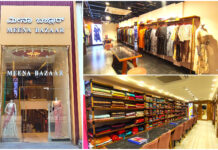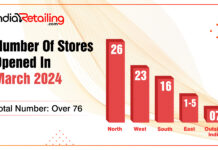One promising technology that is increasingly getting fast tracked into adoption is intelligent video analytics, powered through computer vision and deep learning algorithms
By Bhaskar Jyoti Roy
The crux of any retail business is delivering value to the customer. Brick and Mortar Retailers have to continuously assess and enhance their value delivery systems. With the rise of online retail, adoption of UPI payments, and due to the fallout of the pandemic, customer habits have undergone a sea change. Customers have the choice not to venture into a particular retail store unless there is a compelling and exceptional customer experience provided. The ask for retailers is indeed tall and they have to ramp up their tech stack and organisational culture to provide the high levels of customer service.
One promising technology that is increasingly getting fast tracked into adoption is Intelligent Video Analytics, powered through computer vision and deep learning algorithms.
Deeper Visibility into the shopper journey
Traditionally, the source of truth for customer insights is the manual footfall counting through clickers and POS sales data. The manual footfall counting is inaccurate and does not have any granularity to provide hourly, demographic insights. Meanwhile, the POS sales data does not capture information on the customers who did not make a purchase. Further, Sales being an outcome, it is a lagging metric.
In view of this, there is a need to gain access to dynamic KPIs, which are more attuned with the in[1]store operations and the customers. This is where Video analytics fi ts in perfectly by unlocking metrics that give full visibility to the customer behaviour and journey within the store
Intelligent video analytics
Intelligent Video Analytics technology taps into the video footages from existing camera feeds in the retail stores and processes it to deliver insights. At its core, the technology has two aspects – people[1]counting and object-detection, in a defi ned zone. Where it gets interesting is the use-cases that can be powered through this technology:
- Customer footfalls
Increasing footfall and understanding the customer behaviour is integral to any retail or brick and mortar setup for their business’s expansion strategy to grow and maximize profits. Through intelligent video analysis, brands can monitor a customer’s journey from entry to exit without facial recognition and just bifurcate it through various points.
The questions it can help solve are:
- What are the Demographics – age group and gender mix of customers?
- What are the footfall patterns in store?
- Are we seeing an uptick or a drop in footfalls?
- How many customers passing by the store actually entered the store?
- How to achieve optimal staffing based on footfall and occupancy patterns?
- Monitor zone-wise/ Department-wise conversions
Retailers also stand to gain by tracking the customer traffic into the various departments within the store. Tracking only purchase transactions from departments would be unidimensional and there is a need to augment it with the shopper journey metrics such as number of customers, average dwell times, number of aisle touches etc. and get answers to questions such as:
Which areas/aisles do the customers visit in the store
How much time do they spend in each of the departments
Is a particular department attracting high footfalls but low conversions. Then the issue might be with pricing or the product mix in that section.
A slightly altered scenario would be, is a particular section not at all getting any footfalls? The store should do A/B testing to check whether it’s a customer pathing issue or product mix issue or staffi ng or planogramming.
- Product interaction and end-cap analytics
Grocery retailers can track number of product touches at the endcaps. This can help them understand which products give high ROI at end caps. Further, based on real time data, Retailers can negotiate with CPG vendors and sell that space at its true price.
- Dominant paths and cross-conversions in the store Big box retail and departmental stores in particular would be interested in knowing the cross-visitation across different departments. How many customers visited from one department to another department? Can this information be utilised to come with product bundling or curated offerings? If there is a drop in cross visitations amongst two departments, is it a cause of concern?
- Optimize checkout process
A smooth checkout experience is quintessential to ensure a higher customer satisfaction and loyalty. Video analytics can be used to predict line length and wait times during different times of the day. In-store teams will be alerted to open new counters in case of long queues.
Relentless A/B testing
Intelligent video analytics has enabled retailers to decide the level of intervention required by separating and distilling the impact of each of the individual driving factors at the store level. The whole cycle of improvements processes such as DMAIC (Defi ne-Measure-Analyze-Improve-Control) can be executed much faster by use of granular metrics such as zone wise dwell times, entries, product engagements in a matter of days or few weeks. The instore teams, Regional Teams and the Head offi ce Teams can access this information through mobile apps and dashboards. This new measured and calibrated approach in real time marks a shift from earlier response of fi ring all cylinders in the dark.
Moving towards a truly digitalized store
The go-forward strategy for retailers would be to augment the POS, CRM, inventory, labor data, marketing calendar with in-store video analytics. With increasing accessibility through multiple developments such as cloud adoption, GPU chip advancements, 5G rollout etc., the adoption of video analytics for retailers would no longer be a choice but become a critical cog in the organization wheel. The true differentiating factor will be the extent to which the retailers will be able to integrate the various use-cases and the real time metrics into their operations, and strategy to truly own the customer journey.
The writer is Director of Business Development, Deep North, an analytics and AI company focused on providing insights for the physical world.







